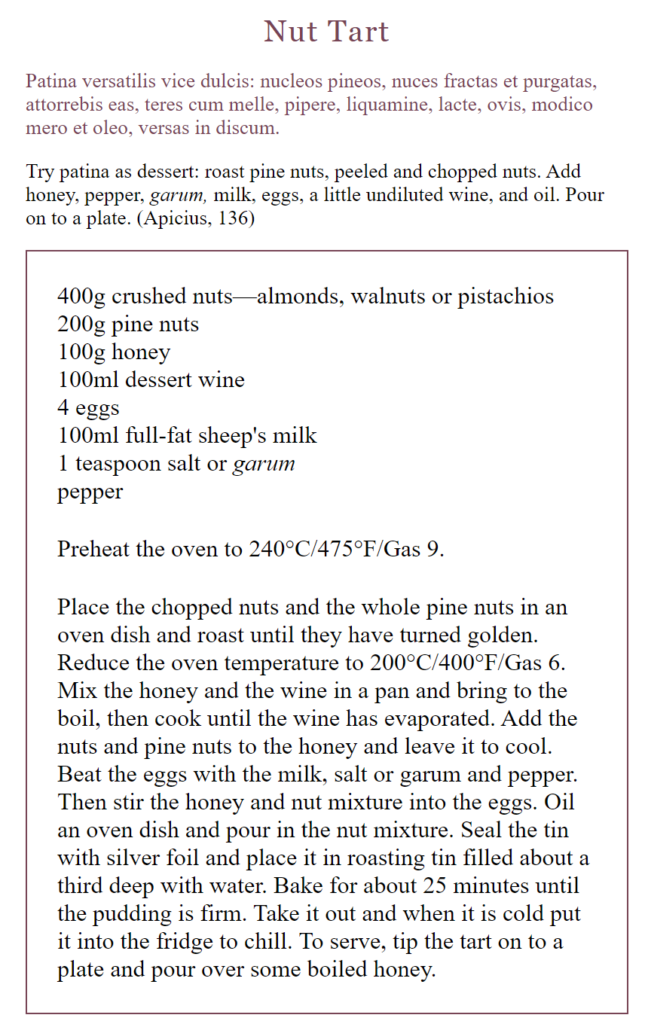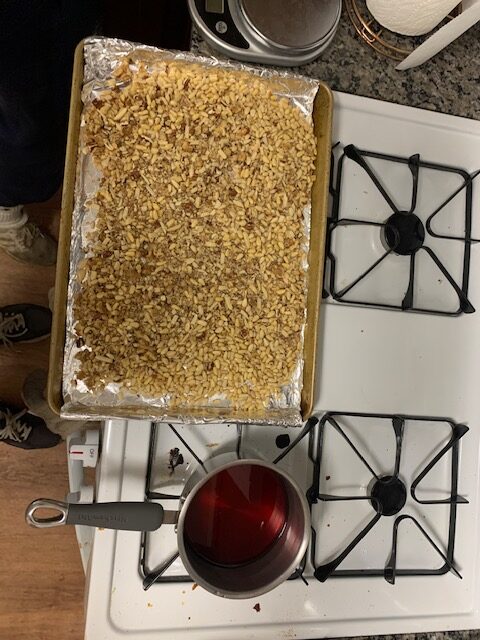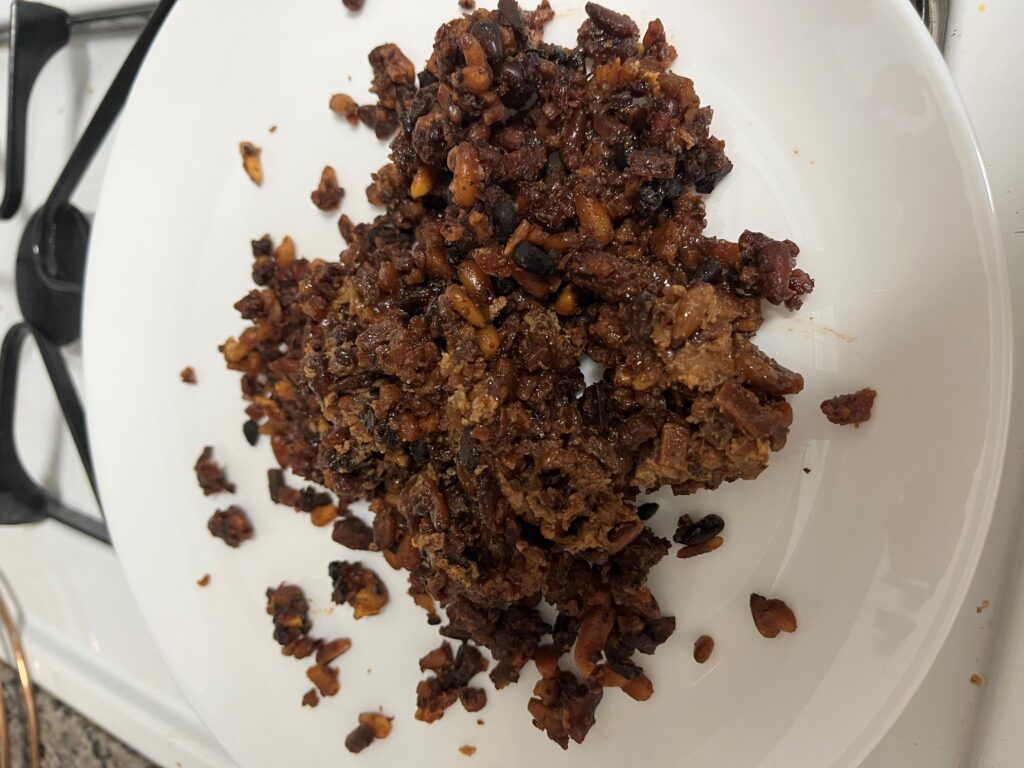Nut Tart an Unsuccessful Exploration into Roman Baked Goods
As part of our continued exploration into Roman culture and life, Ben Meyers and I decided that cooking a Roman style dish would be an excellent way to further understand the lives of the Romans. We found an article from the University of Chicago that detailed a variety of Roman recipes mostly from Apicius first in their original Latin and then also adjusted for the modern age. We decided on a Recipe for a Roman Nut Tart from Apiciuc,136 due to the fact that we thought it might be difficult to find a wild boar or ostrich.

We were succesful in finding the ingredients for our dish with the exception of the full fat sheep’s milk which we substituted with full fat cow’s milk.

Following the recipe we started by roasting a large quantity of nuts and then combining with a mixture of desert wine and honey
We then allowed this mixture to cool and added the eggs, milk, salt and pepper.
This combination was put into a glass oven dish and put in an water bath in the oven at 400 degrees for 24 minutes.
We then removed it from the oven and allowed it to cool before chilling it in the fridge.

After letting the tart sit in the refrigerator overnight, we decided to try our creation. The first issue we encountered was how to remove the tart from the oven dish. While we thoroughly oiled the dish before baking, the tart would not simply fall out as the recipe had claimed. Thus, we attempted to loosen the tart around the edges to aid. This too failed. Finally, we cut out a section of the tart and removed it with two forks; however, it immediately crumbled and lost its shape. We then scooped out the section that had crumbled and it was finally time to taste it. As you can see in some of the pictures, the majority of the tart is comprised of the nut mixture. Our first reaction when tasting the dish was the overwhelming amount of nuts. The consistency reminded us of chewing on a handful of assorted nuts from a trail mix; however, they were moist and crushed nuts. The nut part of the dish was actually quite good and tasted like roasted nuts you might find on a street corner. The next notable aspect of this dish was the fact that the eggs and milk batter that we added to the nut mixture completely settled and separated on the bottom of the dish. This led to the bottom portion of the nut tart tasting like undercooked eggs (would have been the top if it had come out of the tin correctly. We believe that the original intention was for the milk and eggs batter to mix more with the nut mixture.
While the final product was not one that we would recommend, we believe that a true Roman chef could have prepared this dish in an entirely different way that may have led to a more edible tart. For any future chef who might attempt to make this dish we would recommend trying to find sheep’s milk along with halving the recipe or using a much larger baking tin.